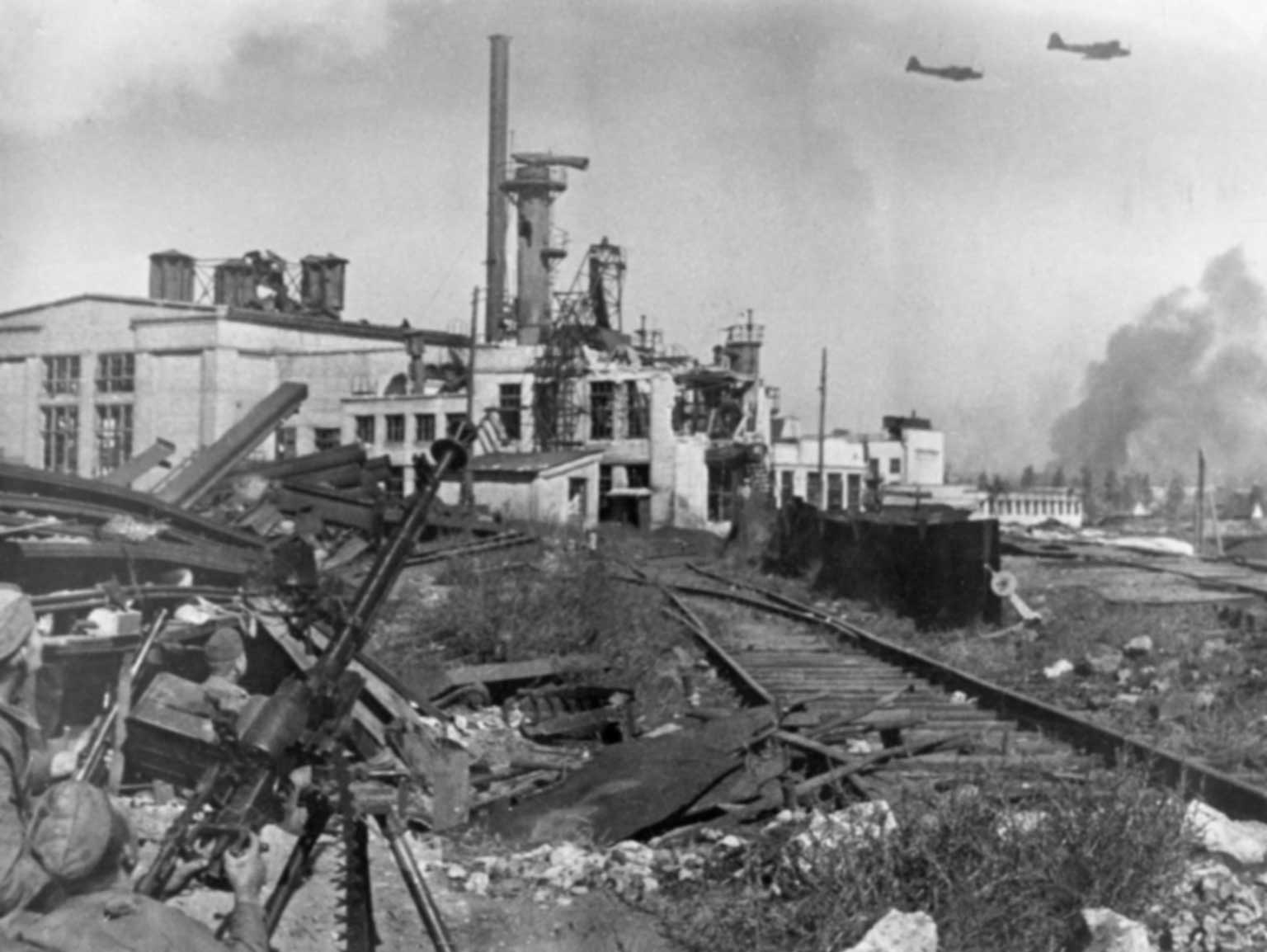Red Army soldiers of the 12.7-mm DShK anti-aircraft machine gun watch the actions of two Soviet Ilyushin Il-2 attack aircraft during the Battle of Stalingrad. Surroundings of the plant “Red October“. Eastern Front, World War II.
Source of information about the DShK heavy machine gun photo: visualrian.ru
Location: Stalingrad, USSR
Shooting time: September 23, 1942
Author: Emmanuil Evzerikhin
DShK (Index GRAU – 56-P-542) – Soviet heavy machine gun caliber 12.7 × 108 mm. Developed on the basis of the design of the DK heavy machine gun.
In February 1939, the DShK was adopted by the Red Army under the designation “12.7 mm heavy machine gun Degtyarev – Shpagin model 1938”.
While maintaining the principle of operation of automation and the scheme for locking the bore of the DShK machine gun, the power mechanism was completely changed (it provided the supply of a cartridge belt either from the right side or from the left). Accordingly, the design of the cartridge belt (the so-called “crab” type) has also become different. The muzzle brake had a different design.
Large-caliber machine gun mod. 1938/46 is distinguished by a relatively high firing efficiency. In terms of muzzle energy, which ranged from 18.8 to 19.2 kJ, it surpassed almost all existing systems of machine guns of this caliber. Thanks to this, a large penetrating effect of the bullet on armored targets was achieved: at a distance of 500 m, it penetrates high-hardness steel armor 15 mm thick (20 mm medium-hard armor type RHA).
The DShK machine gun has a fairly high rate of fire, which determines the effectiveness of fire on fast-moving targets. Maintaining a high rate of fire, despite the increase in caliber, was facilitated by the introduction of a buffer device in the butt plate of the machine gun. The elastic buffer also softens the blows of the moving system in the rearmost position, which favorably affects the survivability of parts and accuracy of fire.
